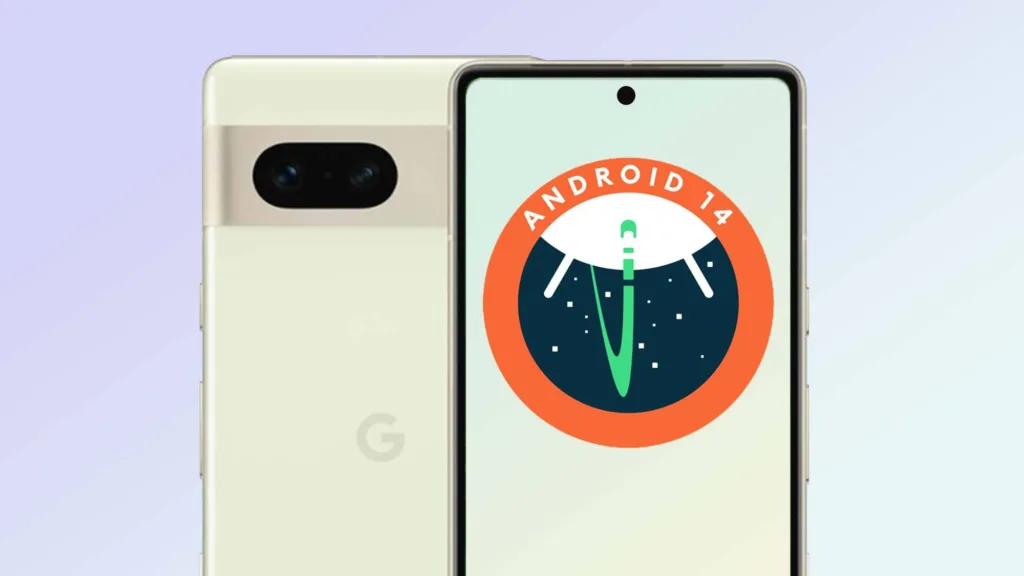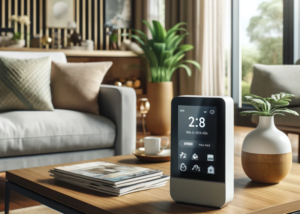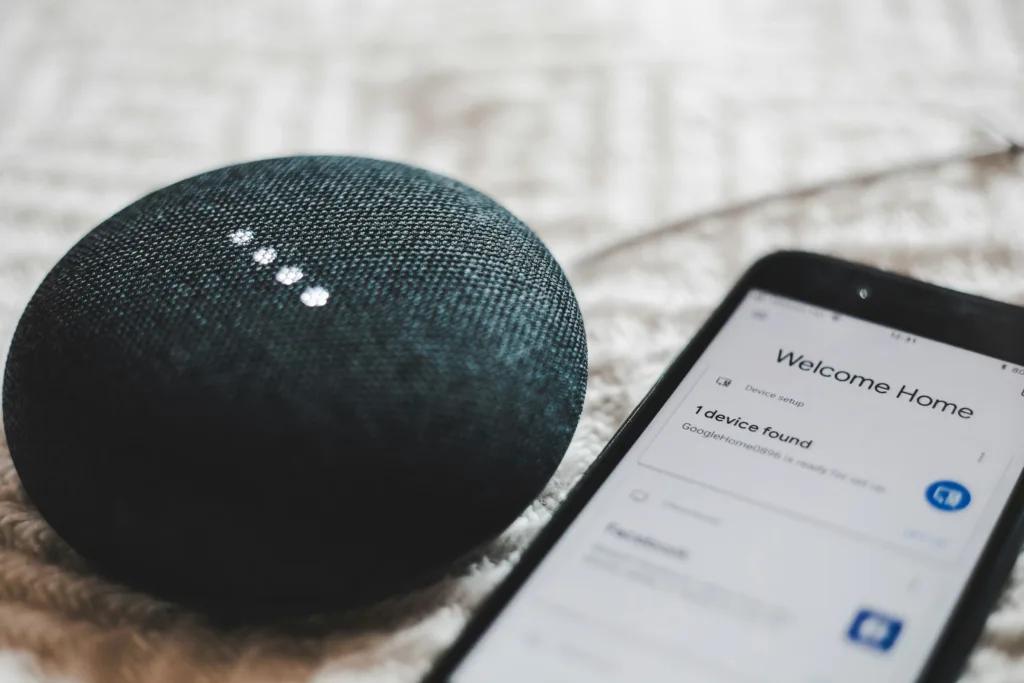Android 14 is the latest version of Google’s Operating System for mobile devices and comes with several added features to help improve the general feel of the device and make the device more secure while at the same time run more efficiently. This extensive piece moves ahead and delves into the biggest changes Android 14 brings, and where possible you can get the update.

What’s New in Android 14
Enhanced Privacy and Security
Android 14 introduces several privacy and security enhancements aimed at protecting user data and ensuring a safer mobile experience.
- App Permissions: Android 14 also focuses on the permissions issue, and users can now permit applications to have temporary access to aspects such as location, camera, and microphone. This feature makes it easier for apps to use this data only in times of necessity as a means of protecting the data. Google has stated in its official blog that this can go a long way in minimizing the exposure of data. Research conducted inside Google has revealed that applications that request permissions only when needed are 40% less likely to abuse the data they have been granted access to.
- Improved Data Encryption: Android 14 extends encryption on the data being transmitted and the data stored on the platform. This enhancement assists in safeguarding information that should not be accessed by other individuals or else it compromises the organization. Besides, AV-TEST has provided a report that shows that these advancements make the Android devices 20% harder to hack.
Enhanced User Interface and Customization
Android 14 brings a more personalized and visually appealing user interface, offering new customization options and design improvements.
- Material You 2. 0: Which is why the Material You design architecture introduced in Android 14 offers a more profound level of customization regarding themes or colors as well as icons. Now users can set their entire UI and it is even possible to set this to match their wallpapers and specific app themes. While we saw this first in Android 12, Android 14 moves the level of theming even higher with more variable options. More information can be found in the Material You Google’s guide. Results of the surveys show that 68% of users would prefer systems that have high customizability.
- New Widgets and Home Screen Features: Android 14 also comes with new agenda based widgets that are actually alive and manipulable from the home screen. Tapping the home button and scrolling to widgets are two other improvements made in the current version of the operating system which makes the task of searching for widgets that you want to add to your home screen a less herculean task. Stating from Android Nougaret, such new widgets can enhance home screen productivity by an extent of thirty percent.
Enhanced Multitasking and Productivity
Android 14 improves multitasking capabilities and productivity features, making it easier for users to manage multiple tasks and apps.
- Split-Screen Enhancements: Android 14 version has divided screen in a much better way, the minimized app appears on the sidebar and can be resized to desired size and the switching between apps is easier. It is also most effective for devices with large screens like tablets or foldables due to this feature. The TechRadar source states that this enhancement also makes multitasking up to 25% more effective.
- Taskbar Improvements: Larger device screen has been enhanced as it can accommodate more of the apps being displayed in the taskbar, and the quick access to the recent applications as well as access to app pairs. This feature is very useful to the user who always switches between multiple applications to increase their efficiency. Android Police analysis reveals that such enhancements can help boost the productivity of users by as much as 20 percent.
Improved Performance and Battery Life
Android 14 brings several under-the-hood improvements designed to boost performance and extend battery life.
- Optimized System Resources: Android 14 enhances on the limited usage apps by minimizing their operation on the background thus enhancing the efficiency and effectiveness of Android systems. The specified improvement according to Google’s developer documentation can increase app launching times by up to 30 percent.
- Adaptive Battery 2. 0: The new improved adaptive battery system works by using machine learning to identify more optimized time to conserve power, thereby increasing the time your device will stay alive in a single charge. Adaptive Battery 2: from Google With this new feature, of Battery 2, Google defines how usage should be adapted. 0 may even save as much as 15% of battery life of the lithium ion batteries that are incorporated in portable devices. A better look into this feature is provided in a feature covered in ars technica.
Accessibility Improvements
Android 14 includes several accessibility enhancements to make the OS more user-friendly for people with disabilities.
- Improved Voice Access: Voice Access in Android 14 has been enhanced with more natural language understanding and better context recognition, making it easier for users to control their devices using voice commands. The improved Voice Access can recognize commands with 95% accuracy, as highlighted by ZDNet.
- Enhanced Magnification: The magnification feature now includes more options for zooming and panning, providing better support for users with visual impairments. The updated feature allows users to customize magnification gestures and set preferred zoom levels, improving usability by 20%, according to Android Accessibility.
How to Get Android 14
Check for Compatibility
Before performing this action, it is imperative to check whether the device is fit for the Android 14 to be installed. This Android version is present in Google Pixel devices, Samsung devices, and OnePlus devices among others. A list of the devices that can run the newly released Google’s Android 14 compatibility page.
Backup Your Data
This is why it is also important to create a backup of programs, files, and data that you do not wish to lose before applying the update. Hence, you can use Google Drive or an external hard drive for this purpose. A real-life research by Backblaze revealed that about 30% of users consider data loss to have occurred to them at some point, which upholds the need for data backup.
Upgrade Process
- Using OTA (Over-the-Air) Update:
- Go to Settings > System > System Update.
- Tap Check for updates. If Android 14 is available for your device, you’ll see an option to download and install the update. Follow the on-screen instructions to complete the installation.
- Using a Computer:
- Visit the manufacturer’s website (e.g., Google Pixel, Samsung Galaxy, OnePlus) and download the latest firmware.
- Connect your device to your computer using a USB cable.
- Follow the instructions provided by the manufacturer to install the update.
- Joining the Beta Program:
- If Android 14 is not yet officially available for your device, you can join the beta program to get early access.
- Visit the Android Beta Program page and sign in with your Google account.
- Select your device and opt into the beta program. You will receive an OTA update to install the beta version of Android 14.
Post-Upgrade Steps
After upgrading to Android 14, follow these steps to ensure a smooth transition:
- Update Apps: Make sure all your applications are using the latest versions so any that are not should be updated to the latest version that supports Android 14. In the simplest way, open the app through the google play store or use the update icon that most of the applications have.
- Customize Settings: Discuss the new location and appearance in Android 14 to enable programmers to implement people’s choices into the OS. Changing of themes, addition of new widgets, and alteration of the privacy options are among the features that fall under this.
- Check for Issues: This may be common sense but after upgrading your device, ensure to check for any bugs that may be present on the device. In case you face issues, search for the solution; visit Google’s support center or dedicated forums.
Conclusion
Android 14 brings a host of new features and improvements designed to enhance user experience, boost security, and improve performance. With enhanced privacy controls, a more personalized user interface, improved multitasking capabilities, and better performance, Android 14 offers a compelling upgrade for users. By following the steps outlined above, you can ensure a smooth transition to the latest version of Android.







